Managing Your Business
Spotlight: How America's Gleaned Seafood Helps Feed the Hungry

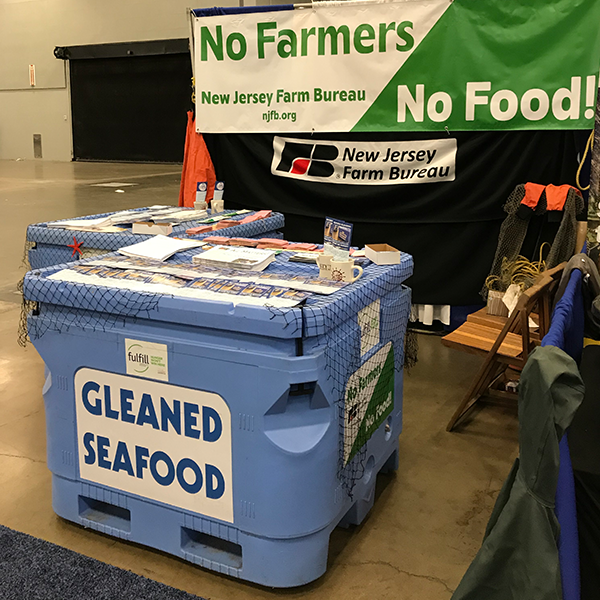
Each year, approximately 6%-7% of all US crops are not harvested because of factors unrelated to food safety. Farmers typically offer these crops to volunteers who "glean," or gather, them and donate them to local food banks. This both reduces food waste and provides a valuable source of fresh produce to food-insecure families.
Each year, New Jersey's commercial fishermen catch 190 million pounds of seafood, but 17%-22% of it is bycatch, non-marketable fish that cannot be sold and are typically discarded. For years, the commercial fishing industry has longed to have its own gleaning program, but regulations have made this process difficult to implement.
In 2018, Brick Wenzel, a longtime New Jersey commercial fisherman, founded America's Gleaned Seafood (AGS), a 501(c)3 nonprofit with a mission to reduce hunger by connecting the commercial fishing industry to local food banks. This means seafood left after the harvest could be gleaned and donated to food banks, rather than wasted. In New Jersey alone, that means 24 million pounds of fresh seafood annually to feed people suffering from hunger.
Today, fisherman Brick Wenzel is going to reel us in with the tale of a tiny island on the Jersey Shore that became a big fish in the national fight for food security.
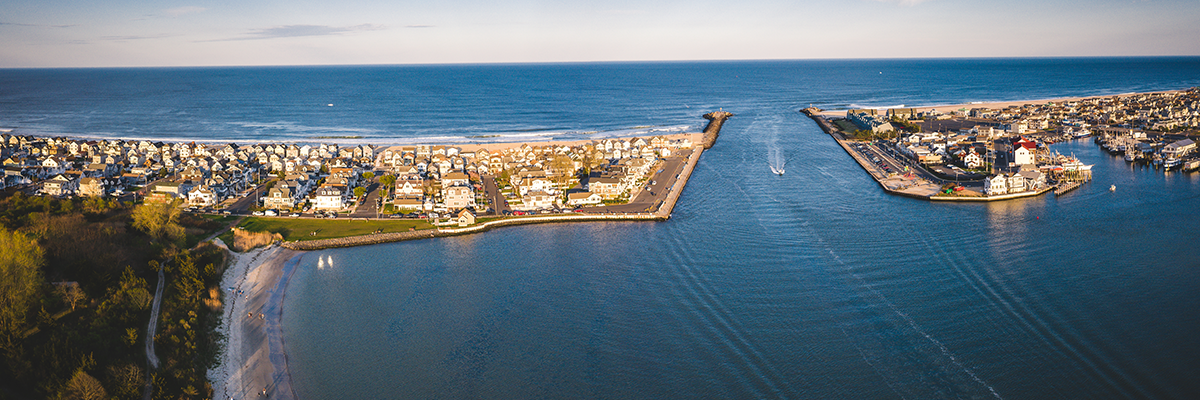
Where did you get the idea for seafood gleaning?
I'm definitely not the first one to think of it. Gleaning seafood is something that almost everyone in the fishing industry has wanted to do for a long time.
I think everyone who fishes comes up with the idea the very first time they go fishing. We all have a very similar experience. You might be seven years old, maybe a little older or a little younger. You're down at the pond or dock, or you're on a beach or a boat, and an older relative takes you fishing.
You catch your first fish and reel it in. Maybe you get to keep it. Maybe it's too small or the wrong kind of fish, and you have to throw it back. The person you're with helps you get it off the hook and throws it back in the water.
Sometimes that fish swims off, but sometimes that fish just floats there or sinks slowly. Maybe the hook was too far down the fish's throat and it died.
You actually took something out of its ecosystem, killed it, and threw it away. When you're that young, and you look at the waste, it's very upsetting. This was my experience, and a lot of people I've spoken to have had the same experience.
Tell us about your background. What skills helped you start AGS? What new skills have you learned since it began?
I was born and raised on the Jersey Shore, where you got sand between your toes and the ocean sea breeze on your back. I grew up on an island a little over 100 yards wide, about 22 miles long, and 11 of those miles are preservation land owned by the state.
You often hear that Jersey is the most densely populated state. There's a joke that you can take a 20-foot ladder and crawl rooftop-to-rooftop across the entire state. There's some truth to that, but a lot of the houses on the beach are seasonal summer homes.
Everyone comes to the Jersey Shore in summer, but there are very few people who actually live here year-round. To give you an example, last year, the kindergarten class had four kids total. In winter, the population of our community is less than 1000, but during the summer season, it's 30 thousand to 40 thousand people.
I'm one of the very few people actually born and raised here. I'm a fisherman, I was the town's newspaper boy when I was a kid. I am a part of the sand and the beach and the ecosystem.
When I was 18, five people moved into the community and decided to run for office. Even at that age, I had spent more actual time living there than all of them combined. It didn't feel right, so I ran for town council and became the youngest elected official in the state of New Jersey at the age of 19.
Since then, I've had a lot of leadership opportunities. I've had positions on the municipal level, county level, state level, and national level. I've served on the county environmental agency, state tourism council, and state farm bureau. I opened an ice cream shop and a restaurant and served on the state board of directors for the restaurant industry.
Commercial fishing, being out at sea, is my passion, but I tend to spend more time on land these days. My fellow fishers tell me that it's more important for me to be here on land advocating on their behalf, working to further the gleaning program and mitigate the damages to the commercial fishing industry.
One of the running jokes among my fellow fishers is that I'm the best-dressed fisherman on the dock. Sometimes you'll see me take my orange rubber slickers and jumpsuit off, and I'll have a tie on underneath because I'm heading directly to a meeting.
If seafood gleaning was easy, it would have been done a long time ago. I've been very fortunate that my unique background gave me the opportunity to connect with a lot of people who could help put all the pieces together.
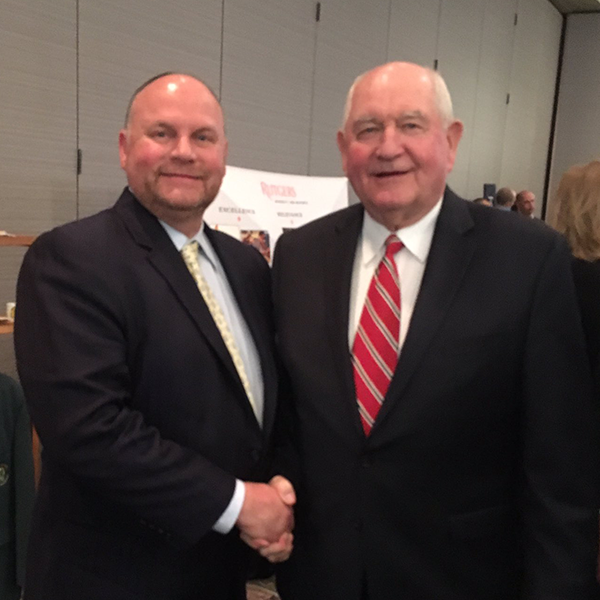
What is the most important work AGS does?
Our most important work is providing a source of protein to hungry individuals and families, especially because food banks don't always have consistent access to proteins like beef, pork, and poultry. In 2018, even in a relatively wealthy state like New Jersey, 1 in 10 residents lacked adequate nutrition. Nationwide, 42 million people — including 16 million children — were at risk of going hungry.
But it's not just about bringing more food in and reducing waste. It's about better jobs, better sustainability, better management, and better information. There are even international implications.
The US has some of the best fisheries management in the world. Just this year, we have something close to 40 different species that have recovered thanks to sustainable management programs. The issue is our bycatch waste, which is the highest in the world.
Other countries already have programs that use their bycatch. When we ask other nations to adopt our sustainable management programs, they say, "That's great, but look at the waste you have." So another benefit of the gleaning program is that it gives us better negotiating power at the international scale.
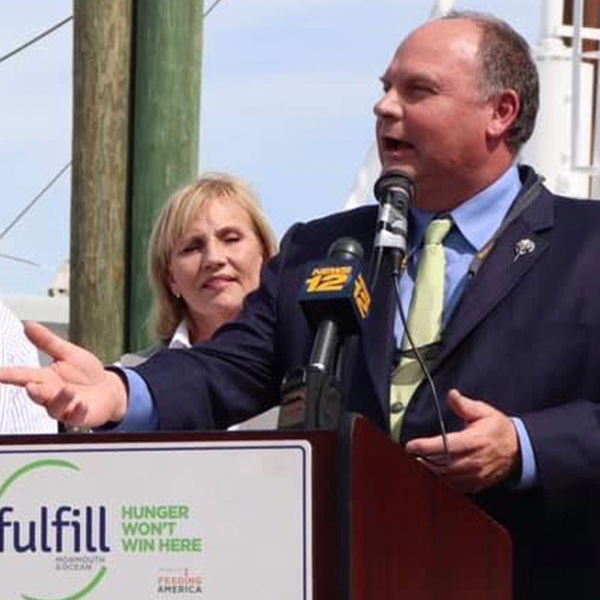
What has been AGS's greatest challenge?
Our greatest challenge is the arcane and complicated regulatory system, dating back to the 1800s, that manages marine fisheries. The commercial fishing industry is the most heavily regulated industry in the country. You'd think nuclear armament or something like that would be the most regulated, but nope, it's commercial fishing.
Every one of the 50 states has its own marine fisheries management programs, and seven presidential cabinet secretaries have federal authority over the commercial fishing industry. This is further complicated by the number of species that these regulatory entities are trying to manage, taking into account migration and international pressures. Add the fact that we are working to comply with food safety requirements, and this creates a challenging environment.
However, we believe once people understand not only what seafood gleaning is, but the benefits it provides to food-insecure individuals, we should see a lot of assistance getting through these complications safely and effectively. This will be especially true in light of the recent supply chain issues that other protein industries are experiencing with COVID-19. It highlights the need to provide more safe, sustainable seafood to keep families healthy and well-fed.
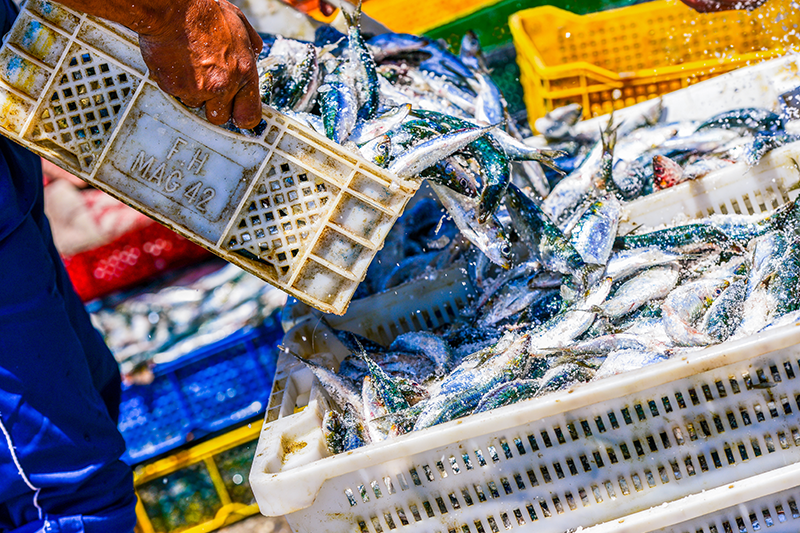
What's something readers might not know about the seafood gleaning program?
The fishers do not get paid for the gleaned fish. They don't even get a tax write off. It's extremely important that everyone understands that there is no financial incentive for them to go out and catch fish for this program. Over the years, people have tried doing a similar gleaning program, but those programs have failed because they tried to incentivize the fisherman by paying them to bring in the fish.
It's a regulations thing. For every regulated species, there's what's called a TAC — total allowable catch. That's the amount of fish legally allowed to be taken out of the biomass each year. If the fisherman gets a penny or a tax write off for the fish they bring in, it counts toward TAC.
What part of this job do you personally find most satisfying?
I love the fishing industry, and I love the people in the fishing industry. I love that I get to work with people I consider my brothers and sisters, advocating for an issue we haven't had a chance to address before.

What has surprised you most about your mission?
Being a commercial fisherman, I tell a lot of stories, right? Fishermen always have a lot of stories to tell. I'd like to answer that question with a story, or three stories, actually.
The first one happened in 2018. I was talking to one of those respected patriarchs of the fishing industry who was active in the 40s and 50s.
He said, "I heard you're startin' this thing, to give to the people, to the food bank. I just wanted to thank you. I can sleep better at night knowing that you're doing this."
He explained now that he's older, he looks back on all the fish that were wasted in his life, and he gets upset about it. He had always wished there was something more he could do.
Another time, this fisherman told me that his son, who's in Harvard law school, came home over the weekend, and had read about the seafood gleaning program. The fisherman explained the program, and his son started to cry.
The son said he had always seen his fisherman father as someone who just took resources and didn't care about the ecosystem. Knowing that his dad was actively participating in this program gave him a whole new view of his father. The fisherman and his son now have a whole different relationship thanks to the gleaning program.
The third story brings it all back home. This fella came in on a longliner, a boat that catches swordfish and tuna. When you unload tuna, you lift the fish up by the tail, weigh it, then cut the tail off.
We take the tail of the swordfish or tuna, which has a significant nub of meat on it. It could be a couple pounds of food. For reference, your typical can of tuna is only 4-5 ounces. Before seafood gleaning, the tails were wasted. Just thrown into the garbage.
So we were gleaning the tails, and this fella from the longliner asked what we were doing. We explained the gleaning program and how the tails were going to a food bank. This fella broke down in tears. And this was a big, burly, bearded fisherman guy in slickers and everything. He just started wailing.
He told us that he used to be food insecure and had relied on the food banks and these types of programs to survive. He knew that there was all this meat being wasted and always wanted to do something about it. Knowing the fish he caught were contributing to the program and feeding hungry people moved him to tears.
When you hear stories like this … this wasn't what this program was created for, but these are the type of effects that we're having on people. This program isn't just about feeding those who are food insecure.
When we started this program, we put together a list of the ways it would affect people. We know there's need in the food banks and fisheries management. We know people need work. We know the international implications.
But these kind of intangibles — being better able to sleep at night, better relationships between fathers and sons, and those individuals in the industry who were once food insecure and are now moved to tears because they're giving back — these are the impacts that you don't realize you're gonna have. When it happens, I start stuttering, I'm speechless, and I'm weak in the knees myself. That sort of stuff just really makes it all worthwhile.
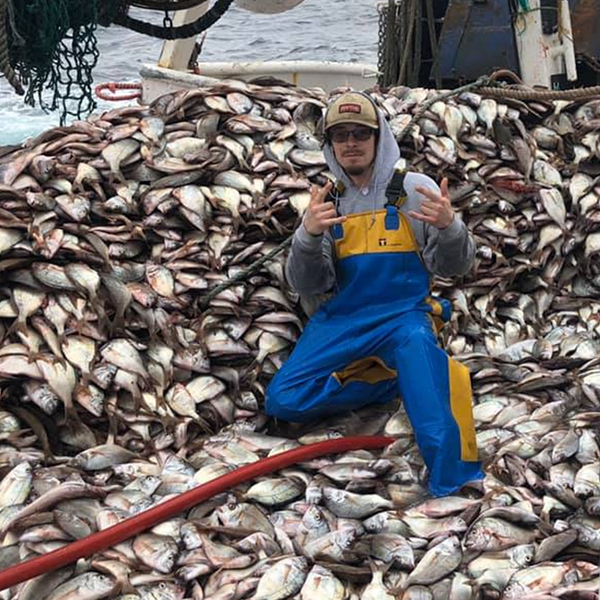
What's next for AGS?
Locally, the program is up and running, and it's great. One of our next goals is to get it enacted on a national scale and establish the United States Seafood Gleaning Program.
When we started this program, the ultimate goal was to have gleaning built into every fisheries management plan. Management plans are very complex and regional, so my original estimate was that it would take something like 40 years to do that right. Doing it right means working with existing rules and regulations. And those rules and regulations take a long time to change.
An individual fisheries management plan usually takes three to five years to put together. It takes at least three years to study the size of the biomass, then all the states in that region have to comment, and then each state has to pass its own regulations that comply with federal and regional regulations about how many fish can be harvested from that biomass. Multiply this by about 200 different regulated species, and you see why I originally thought it'd take about 40 years.
Then COVID-19 happens, drastically expanding the need for this program. This scourge has severely impacted our national and state economies. Many people are out of work, and the situation is getting more desperate as time goes on.
COVID has hit fishers hard, just like everyone else. In a matter of weeks, the fishing industry, like the rest of the world, has been completely upended. Because of restaurant closures, fishers are now coming in from sea to a market that is only purchasing a small fraction of their catch, instead of the normal 90%. Seafood processing plants have laid off staff due to a lack of work. Food banks across the nation are now dealing with a catastrophic surge of need.
All of a sudden, we got everybody trying to figure out how to make this go faster. We even have the President of the United States saying, "Okay, you got 120 days to figure out how to increase the supply chain of seafood." Suddenly, our timetable has accelerated.
The pandemic has proven that there's a need, especially with the supply chain breakdown for beef, pork, and chicken. The seafood gleaning program is under a lot of duress right now, as we try to ramp this up on a national level. We're just pioneering this year, and we're writing the program as we go.
AGS is working to adjust to this emergency by obtaining the necessary licenses and permits to scale this up. We're also seeking funding to have processing plants hire back workers to process the gleaned fish.
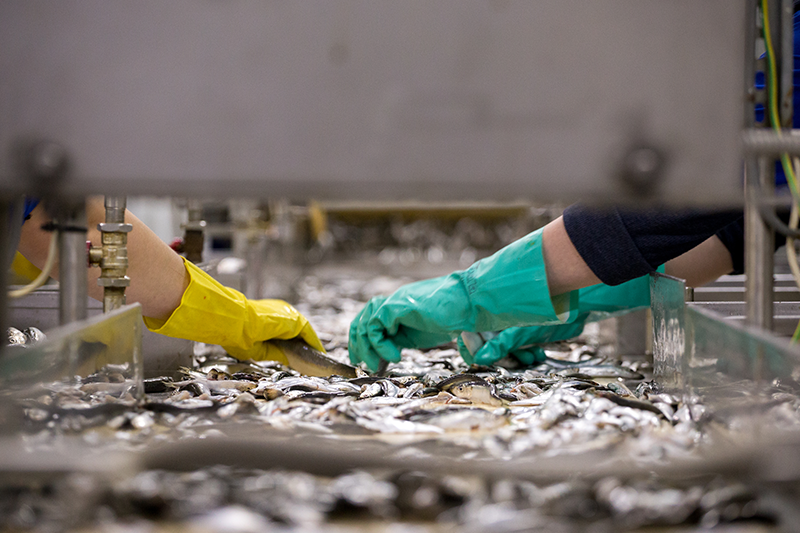
Is there anything else you'd like to add?
If you are in one of the ports or one of the 200 food banks or you're a seafood processor, please be patient. We're going to get to you. We're doing this within the rules and regulations, and we're expanding as fast as we can.
We are looking for people in different states to help us expand. People have contacted us from Alaska, California, Louisiana, North Carolina, Maine, Rhode Island, and Massachusetts.
If you haven't heard about the program, please reach out. We'll get involved. We'll get to you as soon as we can to start helping set up the facilities and processes to get the fish from the dock or the processor to your local food bank and then from the food bank to your local church or pantry or soup kitchen.
Every penny helps, and all the organizations like yourself who are contributing, it's very much appreciated. This COVID-19 thing has us moving a lot faster than we ever thought we'd have to.
What can readers do to help?
Let your legislators know about the seafood gleaning program, and ask for their support. Readers can also donate directly to AGS's program by going to our Facebook page.
If you live in a fishing community, let your fishing friends know about seafood gleaning.
If you find out that it's already happening, please thank a fisher. --
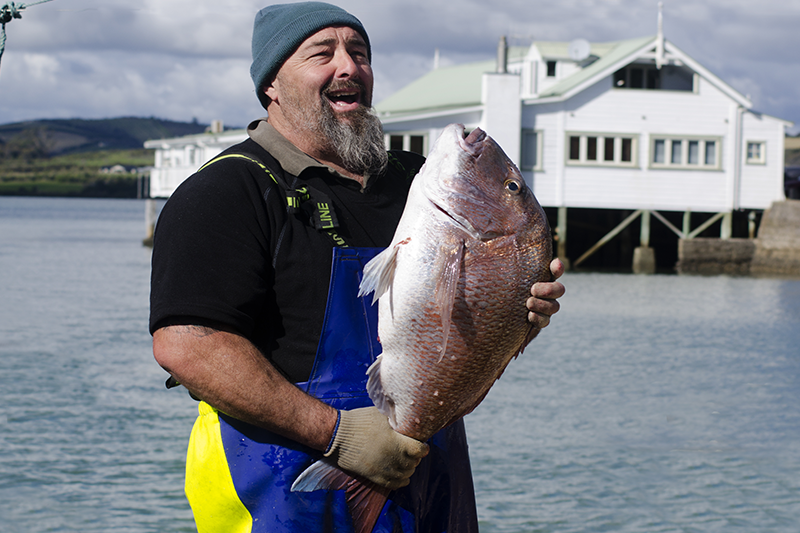
Swyft Filings would like to thank one fisherman in particular right now. Thank you, Brick, for taking the time to tell us your story and for all the work that you do establishing a United States Gleaned Seafood Program (USSGP). We'd also like to thank all the fisherfolks involved in the gleaning program for helping provide food to hungry people. Visit AGS's Twitter to learn more, or view their donate donation page on Facebook.
